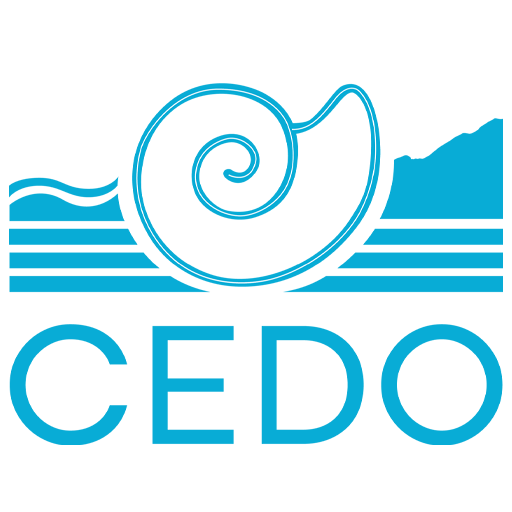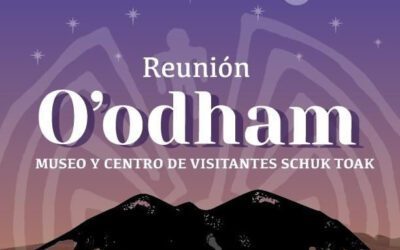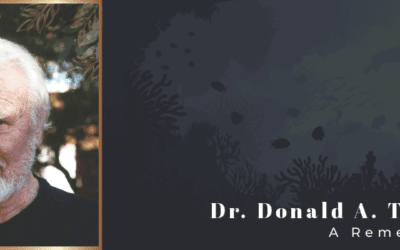[vc_row][vc_column][vc_separator][vc_column_text]By: Catalina López-Sagástegui. General Manager, dataMares.[/vc_column_text][/vc_column][/vc_row][vc_row][vc_column][vc_column_text]In recent years, access to information has become one of the priority issues among academics, civil society organizations, and governments. All the decisions we make in our daily lives are based on information that is available to us. From the beach we choose to spend the day, to the cell phone model we use, to the fish we eat, each of us decides what we do or consume based on the knowledge acquired through experience or because someone has shared that knowledge with us. The same thing happens in science, in conservation, and in natural resources management, with the difference that the more up-to-date and accurate the information available is, the better decisions we can make. But what happens when there is no information, or we don’t have access to information? While the consequences vary depending on the situation, the lack of information limits our ability to generate or take advantage of some benefit that could improve our quality of life and maintain the health of our ecosystems.[/vc_column_text][/vc_column][/vc_row][vc_row][vc_column width=”1/2″][vc_column_text]In an effort to promote a culture of open science, in October 2014, the Gulf of California Marine Program created the platform called dataMares with two goals in mind: (1) to provide a safe and freely accessible (open data) space for databases of biological, fisheries, economic, and spatial data (geo-referenced information), and (2) connect science with decision makers and civil society.
At dataMares we share information from different scientific disciplines through written content, graphic and interactive representations, infographics, animated videos, or databases, geospatial information files or aerial photographs. Our goal is to increase knowledge about the natural capital that exists in Mexico.[/vc_column_text][/vc_column][vc_column width=”1/2″][vc_single_image image=”1428″ img_size=”full” onclick=”custom_link” img_link_target=”_blank” link=”http://datamares.ucsd.edu/”][/vc_column][/vc_row][vc_row][vc_column][vc_column_text]To date, the dataMares platform has collaborated with more than 20 academic institutions, civil society organizations, and government agencies, both in Mexico and abroad. These efforts have made it possible to increase and enrich the data collected, as well as the content and analyses published on our portal. In addition to having scientific advisors to help us review and edit technical content, the dataMares team includes science communication experts responsible for product design and production. Undoubtedly, this multidisciplinary team has promoted a movement in the communication of science in Mexico based on innovation and creativity.[/vc_column_text][/vc_column][/vc_row][vc_row][vc_column width=”1/2″][vc_single_image image=”1411″ img_size=”full” onclick=”custom_link” img_link_target=”_blank” link=”http://datamares.ucsd.edu/”][vc_single_image image=”1412″ img_size=”full” onclick=”link_image”][/vc_column][vc_column width=”1/2″][vc_column_text]As users explore the platform they will come across 126 data visualizations that have been built from 121 different databases. In addition, dataPosters, dataGraphs and Species Profiles present information in friendly and easy-to-read formats. Topics vary and include oceanography, fisheries, ecology (marine and terrestrial), tourism, and conservation. Most of the information that can be found in dataMares was generated by scientists, through short, medium and long term research projects. For example, the largest scientific database corresponds to a rocky reef monitoring project in the Gulf of California and the Mexican Pacific led by the Scripps Institute of Oceanography. For 22 years, a group of researchers has visited 117 rocky reefs to monitor fish and invertebrate communities and to generate biomass and abundance statistics.
There’s also information that is obtained directly from government institutions. For example, we have a database of fishing catches reported to the National Commission for Aquaculture and Fisheries in the Gulf of California and the Pacific that includes records from 2001 to 2019. Through collaboration with the National Commission for Protected Natural Areas, we have created a visualization with information on natural marine protected areas obtained from management programs and scientific research. In addition, the visualization includes a section on priority species where the monitoring programs results can be seen. In 2020, in collaboration with the National Forestry Commission, we launched a collection of communication products called dataBosques that together seek to explain the work behind forest resources management in Mexico.[/vc_column_text][vc_single_image image=”1413″ img_size=”full” alignment=”right” onclick=”custom_link” img_link_target=”_blank” link=”http://datamares.ucsd.edu/”][/vc_column][/vc_row][vc_row][vc_column width=”1/2″][vc_single_image image=”1427″ img_size=”full” onclick=”link_image”][/vc_column][vc_column width=”1/2″][vc_column_text]Contributing to the dataMares information pool is not difficult and our team is ready to advise on data collection and standardization processes. Likewise, we advise on the materials selection and design process for science communication. Researchers and groups dedicated to generating data can safeguard them in our digital collection linked to the University of California library, which assigns a digital material identifier (DOI) object, with which these data can be cited and authorship credit is given to whoever has made it possible to collect such data.[/vc_column_text][/vc_column][/vc_row][vc_row][vc_column][vc_column_text]No matter the size of the databases, the mechanism is designed so that these databases can be periodically updated.[/vc_column_text][/vc_column][/vc_row][vc_row][vc_column width=”1/2″][vc_column_text]One of the databases that is continuously updated is the one built by the Center for Marine Biodiversity and Conservation, in collaboration with coastal fishermen from different communities in the Gulf of California and the Mexican Pacific. Coastal fisheries monitoring collects data on fish catches, the biological variables of the target species, and operating costs. This program has allowed us to improve our knowledge of fishing dynamics in different regions, given that the level of detail in the information generated is at the vessel level. This information contributes to improving fisheries management and allows fisheries to be evaluated with the best available information.
At dataMares we are betting that access to information empowers communities and natural resources users to participate in decision-making processes that seek social, environmental and economic sustainability. Six years after the launch of dataMares, we have learned that this takes time, but it’s something worth investing in.[/vc_column_text][/vc_column][vc_column width=”1/2″][vc_single_image image=”1414″ img_size=”full” alignment=”right” onclick=”link_image”][/vc_column][/vc_row][vc_row][vc_column][vc_column_text]If we want to see a change in how we relate to our natural environment, we need to guarantee free access to information. We need citizens demanding and participating in the generation of data and knowledge that will allow us to face the environmental and economic challenges of the future. We need scientists willing to share their knowledge to build capacity in young people and ensure that society benefits from that knowledge.
If we can close the gap between science and society, we can build a culture of co-responsibility where collaboration with authorities is encouraged through collective learning.[/vc_column_text][/vc_column][/vc_row][vc_row][vc_column][vcj_team_member image=”1415″ name=”About the Author:” layout=”style3″ image_ratio=”portrait” color_name=”#ca972e”]
Catalina López-Sagástegui
General Manager, dataMares
[email protected]
(001) 619-517-3990
@dataMares
datamares.org
[/vcj_team_member][/vc_column][/vc_row][vc_row][vc_column][vc_column_text][ctct form=”1153″ show_title=”false”][/vc_column_text][/vc_column][/vc_row]









0 Comments